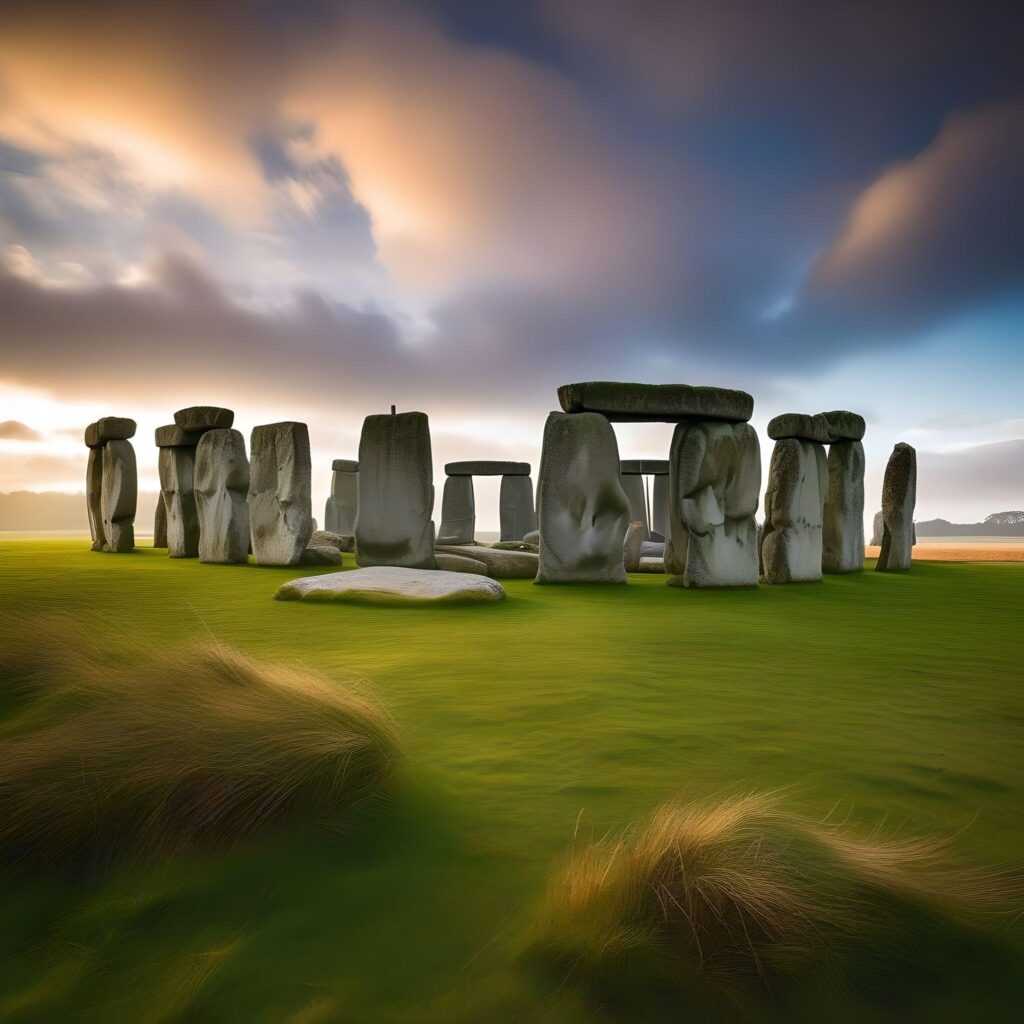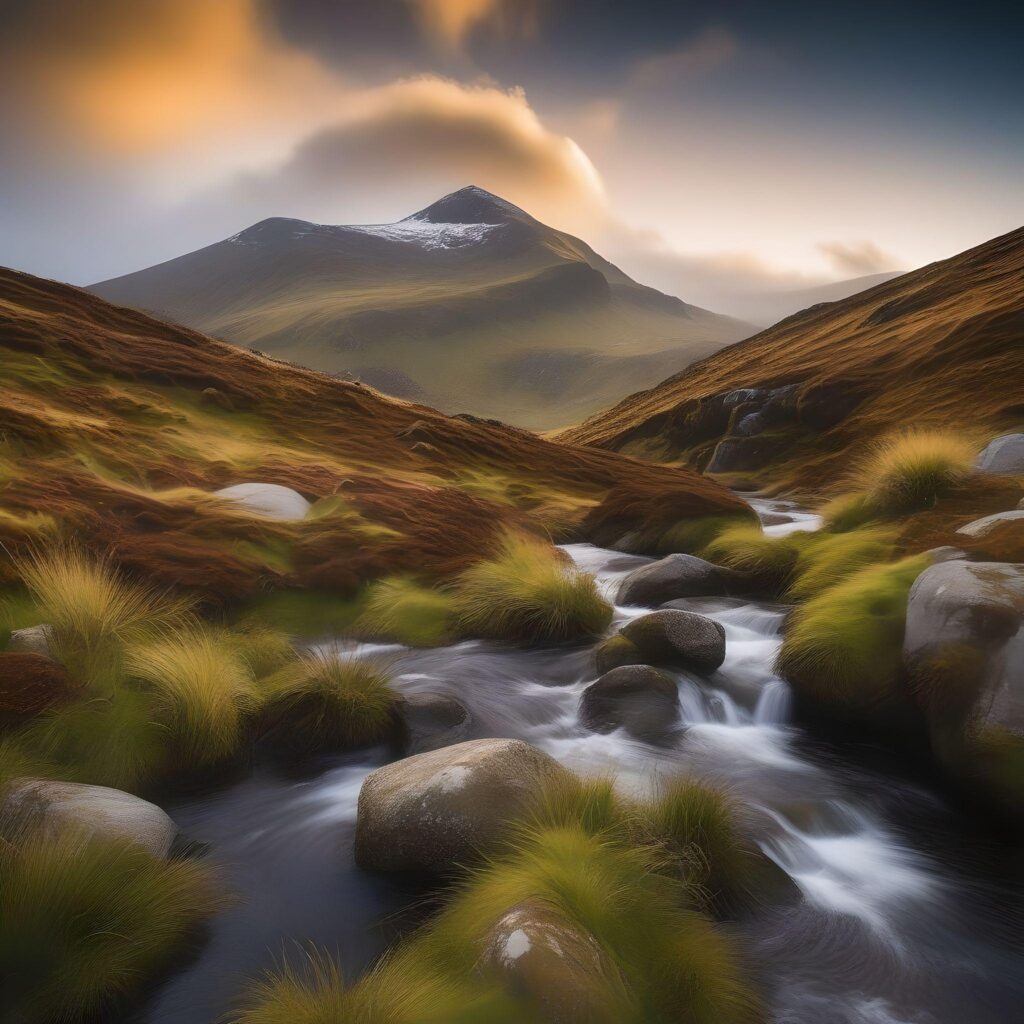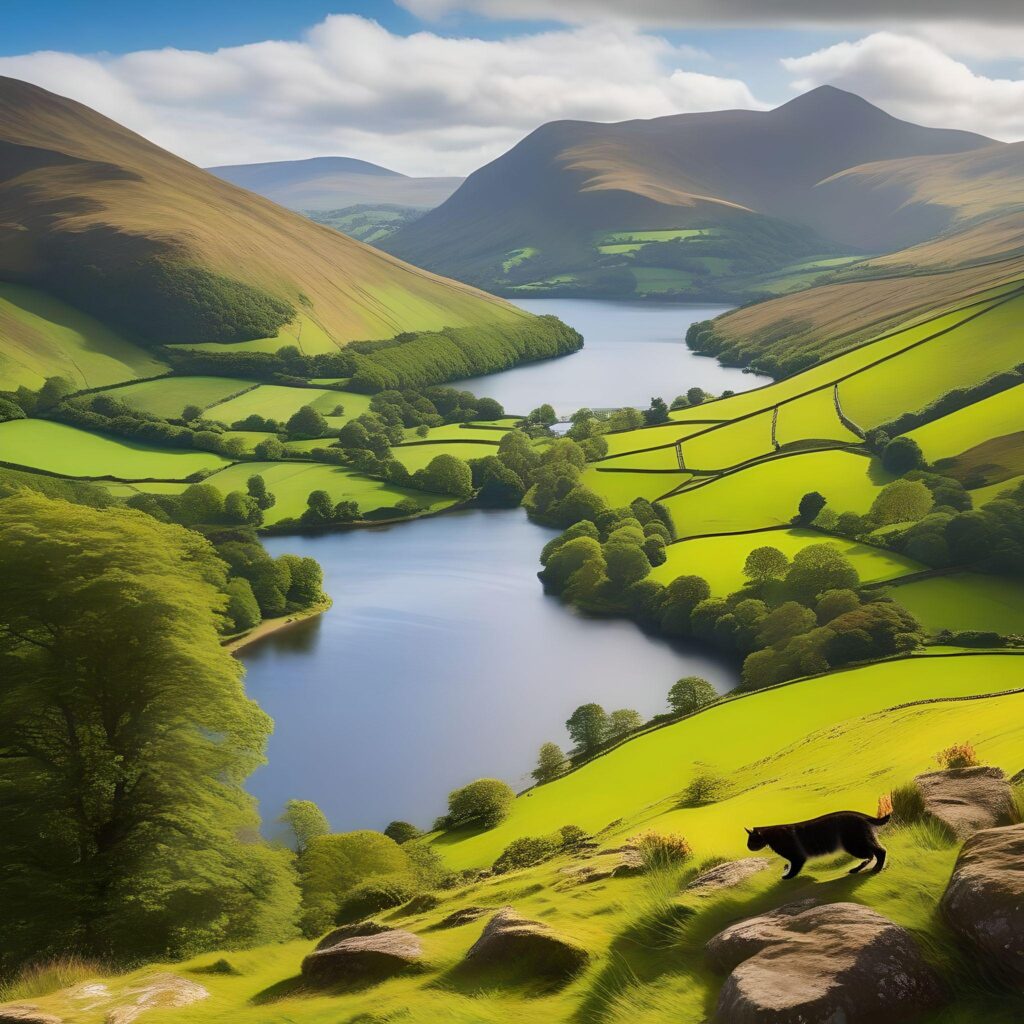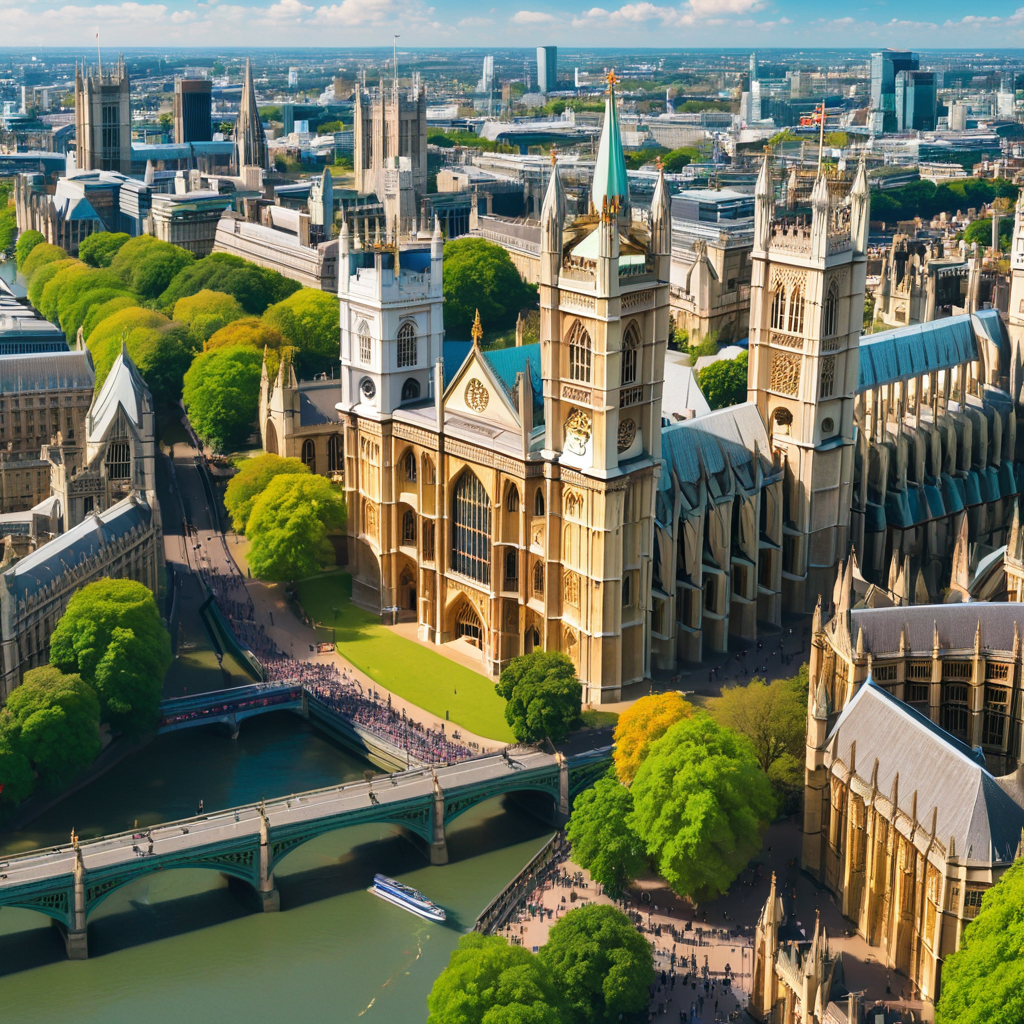Introduction : Top 10 Must-Visit Destinations in the United Kingdom
A. Overview of United Kingdom’s Diverse Travel Destinations:
The United Kingdom stands as a treasure trove of diverse travel destinations, each offering its own unique charm, history, and natural beauty. From the bustling streets of London to the serene landscapes of the Scottish Highlands, and from the ancient mysteries of Stonehenge to the picturesque villages of the Cotswolds, the UK promises an unforgettable journey for travelers seeking rich experiences.
B. Importance of Exploring Different Regions for a Well-Rounded Experience:
Exploring the various regions of the United Kingdom is essential for a well-rounded travel experience. Each region boasts its own distinct culture, traditions, and landscapes, allowing travelers to immerse themselves in the rich tapestry of British life. Whether it’s delving into the literary history of Edinburgh, savoring the culinary delights of Cornwall, or discovering the industrial heritage of Manchester, exploring different regions offers insights into the diversity and complexity of the UK.
C. Setting the Stage for an Exciting Adventure Across the UK:
With its wealth of travel destinations and myriad of experiences awaiting discovery, the United Kingdom sets the stage for an exciting adventure like no other. Whether embarking on a journey through time in historic cities, traversing breathtaking countryside, or indulging in cultural pursuits, the UK offers something to captivate every traveler’s imagination. So, join us as we embark on an exhilarating exploration across the length and breadth of this fascinating island nation.
1. Scotland: From Highlands to Islands

A. Discovering the rugged beauty of the Scottish Highlands:
- Embark on a journey through the breathtaking landscapes of the Scottish Highlands, characterized by towering mountains, deep glens, and shimmering lochs.
- Drive along the North Coast 500 route, one of the world’s most scenic road trips, offering panoramic views of rugged coastline, ancient ruins, and picturesque villages.
- Explore iconic landmarks such as Ben Nevis, the highest peak in the British Isles, and Glen Coe, a dramatic valley steeped in history and legend.
- Immerse yourself in outdoor adventures such as hiking, mountain biking, and wildlife spotting amidst the pristine wilderness of the Highlands.
B. Exploring the historic castles of Edinburgh:
- Delve into the rich history of Scotland’s capital city, Edinburgh, home to an impressive array of historic castles and monuments.
- Visit Edinburgh Castle, perched atop an extinct volcano, to admire its medieval architecture, royal palace, and the Stone of Destiny.
- Explore the Royal Mile, a historic thoroughfare lined with centuries-old buildings, charming shops, and traditional pubs.
- Discover hidden gems such as Holyrood Palace, the official residence of the monarch in Scotland, and the atmospheric underground vaults of the Old Town.
C. Unwinding in the serene Isle of Skye:
- Escape to the enchanting Isle of Skye, known for its rugged coastline, dramatic landscapes, and medieval castles.
- Explore iconic landmarks such as the Old Man of Storr, a striking rock formation overlooking the sea, and the Fairy Pools, crystal-clear pools fed by mountain streams.
- Discover the rich cultural heritage of Skye through its Gaelic traditions, local cuisine, and traditional music.
- Take leisurely walks along coastal paths, white sandy beaches, and lush green valleys, soaking in the tranquility and natural beauty of this remote island.
2. England: Iconic Landmarks and Hidden Gems

A. Marveling at the Wonders of Stonehenge:
- Stonehenge is one of the most iconic and mysterious landmarks in England, attracting visitors from around the world. The ancient stone circle, located on Salisbury Plain, is shrouded in myth and legend, with its origins dating back over 4,000 years.
- While marveling at the towering stones and pondering their significance, visitors can also explore the nearby visitor center to learn about the history and archaeology of Stonehenge through interactive exhibits and displays.
B. Strolling through the Charming Towns of the Cotswolds:
- The Cotswolds is a region of picturesque villages, rolling hills, and golden stone cottages, often referred to as the epitome of English countryside charm. Visitors can stroll through idyllic towns such as Bourton-on-the-Water, Stow-on-the-Wold, and Bibury, admiring the honey-colored buildings and quaint streets.
- Beyond the well-known villages, there are hidden gems to discover in the Cotswolds, such as lesser-known hamlets, historic churches, and scenic walking trails that offer a glimpse into rural English life.
C. Soaking up the Vibrant Atmosphere of London’s Markets:
- London is home to a diverse array of markets, each offering its own unique atmosphere and treasures to discover. From the bustling stalls of Borough Market, where visitors can sample gourmet food and artisanal products, to the eclectic wares of Camden Market, there’s something for everyone.
- In addition to the well-known markets, London is also dotted with hidden gems like the Columbia Road Flower Market, where visitors can wander through a riot of color and fragrance, or the antique stalls of Portobello Road Market, where vintage finds await.
3. Wales: Nature's Playground

A. Hiking in Snowdonia National Park:
- Snowdonia National Park is a paradise for outdoor enthusiasts, offering breathtaking mountain scenery, picturesque lakes, and challenging hiking trails.
- Mount Snowdon, the highest peak in Wales, attracts hikers and climbers from around the world. The summit rewards adventurers with panoramic views of the surrounding countryside.
- Other popular activities in Snowdonia include mountain biking, rock climbing, and wildlife spotting in this diverse and unspoiled natural environment.
B. Visiting the Medieval Castles of Conwy and Caernarfon:
- Wales is home to numerous medieval castles, each with its own fascinating history and architectural significance.
- Conwy Castle, a UNESCO World Heritage site, is one of the best-preserved medieval fortresses in Europe. Visitors can explore its imposing walls, towers, and battlements, which offer stunning views of the surrounding countryside and coastline.
- Caernarfon Castle, another UNESCO World Heritage site, is renowned for its massive defensive walls and polygonal towers. It was built by King Edward I in the 13th century and played a significant role in Welsh history.
C. Relaxing on the Picturesque Beaches of the Gower Peninsula:
- The Gower Peninsula, located on the south coast of Wales, is known for its stunning beaches, dramatic cliffs, and coastal walks.
- Rhossili Bay, often voted one of the best beaches in the world, offers miles of golden sands and sweeping views of the Atlantic Ocean. Visitors can stroll along the shoreline, explore the nearby Worm’s Head promontory, or try their hand at surfing.
- Other beautiful beaches on the Gower Peninsula include Three Cliffs Bay, Caswell Bay, and Oxwich Bay, each offering its own unique charms and opportunities for relaxation and outdoor adventure.
Wales truly is nature’s playground, with its diverse landscapes, rich history, and abundance of outdoor activities. Whether you’re seeking adventure in the mountains, exploring ancient castles, or simply relaxing on the beach, Wales has something for everyone.
4. Northern Ireland: Culture and History

Natural Wonder: Giant’s Causeway
- The Giant’s Causeway is a geological marvel and Northern Ireland’s most famous natural attraction. It consists of about 40,000 interlocking basalt columns formed by volcanic activity millions of years ago.
- Legend has it that the causeway was built by the Irish giant Finn McCool to reach Scotland, where he challenged the Scottish giant Benandonner. The site is steeped in myth and folklore, adding to its allure.
World Heritage Site: The Historic Walled City of Derry~Londonderry
- Derry~Londonderry is the only remaining completely walled city in Ireland and one of the finest examples of a walled city in Europe. Its walls, built in the early 17th century, are remarkably well-preserved.
- The city’s rich history includes its role in the Siege of Derry in 1689, a key event in the Williamite War in Ireland. The walls offer panoramic views of the city and are lined with historic buildings, museums, and cultural attractions.
Local Legends: The Legend of the Giant’s Causeway
- The legend of the Giant’s Causeway tells the story of Finn McCool, an Irish giant who built the causeway as a path to Scotland to confront his rival, the Scottish giant Benandonner.
- According to the legend, Finn McCool built the causeway by tearing up chunks of the coastline and hurling them into the sea. When Benandonner crossed the causeway to challenge him, Finn’s clever wife disguised him as a baby, fooling Benandonner into fleeing in fear.
- The legend of the Giant’s Causeway has been passed down through generations and continues to captivate visitors to this day, adding a magical dimension to the natural wonder.
Northern Ireland’s culture and history are intertwined with its stunning landscapes, ancient sites, and colorful legends, making it a captivating destination for travelers seeking both natural beauty and rich heritage.
5. The Lake District

A. Breathtaking Landscapes:
- The Lake District is renowned for its stunning natural beauty, characterized by picturesque landscapes of rolling hills, tranquil lakes, and verdant valleys.
- Visitors can marvel at the breathtaking vistas from iconic viewpoints such as Orrest Head, Surprise View, and Cat Bells, which offer panoramic views of the surrounding countryside.
B. Lakes, Mountains, and Forests:
- As its name suggests, the Lake District is home to a myriad of shimmering lakes, including Windermere, Derwentwater, and Ullswater, which are surrounded by majestic mountains and lush forests.
- Outdoor enthusiasts can explore the diverse terrain through scenic hikes, boat cruises, and cycling routes, immersing themselves in the region’s natural splendor.
C. Outdoor Activities:
- The Lake District offers a wide range of outdoor activities for adventurers of all levels. Visitors can go hiking, rock climbing, kayaking, paddleboarding, and sailing, among other activities.
- There are numerous trails and paths catering to different abilities, from leisurely strolls along lake shores to challenging climbs up towering peaks such as Scafell Pike, England’s highest mountain.
D. Wildlife Spotting:
- The Lake District is home to a rich diversity of wildlife, including red deer, red squirrels, otters, and a variety of bird species.
- Nature enthusiasts can embark on wildlife-spotting excursions, birdwatching tours, or simply keep an eye out for native creatures while exploring the region’s forests, meadows, and wetlands.
6. The Cotswolds

A. Picturesque Villages
Nestled within the undulating landscape of the Cotswolds are countless picturesque villages that seem frozen in time. Each village exudes its own unique charm, with quaint stone cottages adorned with colorful flowers, winding cobblestone streets, and welcoming village greens. These villages offer a glimpse into England’s rural past, where time seems to move at a slower pace, allowing visitors to immerse themselves in the timeless beauty of their surroundings.
B. Rolling Hills
The Cotswolds are renowned for their iconic rolling hills, which stretch as far as the eye can see. These gentle, grassy slopes create a mesmerizing patchwork of greenery, dotted with grazing sheep and meandering footpaths. Whether exploring on foot, by bicycle, or from the comfort of a car, the rolling hills of the Cotswolds provide endless opportunities for exploration and discovery, with breathtaking views around every corner.
C. Thatched Cottages
One of the most enchanting features of the Cotswolds landscape is the prevalence of thatched cottages, their roofs adorned with golden straw or reeds. These traditional dwellings add to the area’s timeless appeal, evoking images of a bygone era. Stepping inside one of these charming cottages is like stepping back in time, with their low ceilings, exposed beams, and cozy fireplaces offering a glimpse into the past.
D. Charming Towns like Bourton-on-the-Water and Stow-on-the-Wold
Within the heart of the Cotswolds lie charming towns like Bourton-on-the-Water and Stow-on-the-Wold, each offering its own unique blend of history, culture, and hospitality. Bourton-on-the-Water, often referred to as the “Venice of the Cotswolds,” captivates visitors with its idyllic riverside setting, stone bridges, and bustling cafes. Meanwhile, Stow-on-the-Wold, perched atop a hill, boasts a rich history dating back to Roman times, with its ancient market square, historic pubs, and charming boutiques inviting exploration at every turn. These towns serve as perfect bases for exploring the surrounding countryside, providing a warm welcome to travelers eager to experience the timeless beauty of the Cotswolds.
7. Cambridge

A. Prestigious University: Cambridge University stands as a symbol of academic excellence, attracting students and scholars from across the globe. Its rich history, dating back to 1209, is intertwined with numerous groundbreaking discoveries and contributions to various fields of study, making it one of the most prestigious educational institutions in the world.
B. Beautiful Colleges: The colleges of Cambridge University are renowned for their stunning architecture, manicured gardens, and serene courtyards. Each college has its own unique charm, with buildings ranging from medieval masterpieces to modern marvels. Walking through the cobblestone streets and admiring the picturesque scenery, visitors can’t help but be captivated by the beauty that surrounds them.
C. Punting on the River Cam: Punting on the tranquil waters of the River Cam is a quintessential Cambridge experience. Whether it’s leisurely gliding past the historic colleges or exploring the picturesque countryside, punting offers a unique perspective of the city’s beauty. It’s a popular pastime for both locals and tourists alike, providing a peaceful escape from the hustle and bustle of everyday life.
D. King’s College Chapel: King’s College Chapel is an architectural masterpiece and an iconic symbol of Cambridge. Its stunning gothic design and intricate stained glass windows leave visitors in awe of its beauty and grandeur. The chapel’s history is equally impressive, having played a significant role in the university’s traditions and ceremonies for centuries.
E. Fitzwilliam Museum: The Fitzwilliam Museum stands as a testament to Cambridge’s cultural richness and intellectual heritage. Housing a vast collection of art and antiquities from around the world, it offers visitors a glimpse into diverse cultures and historical periods. From ancient artifacts to Renaissance masterpieces, the museum’s exhibits inspire curiosity and appreciation for the arts.
In summary, Cambridge’s allure lies in its prestigious university, beautiful colleges, tranquil river punting, iconic landmarks like King’s College Chapel, and enriching cultural experiences such as visiting the Fitzwilliam Museum. Together, these facets create a unique and captivating destination that continues to draw visitors from far and wide.
8. The Jurassic Coast

A. UNESCO World Heritage Site: The Jurassic Coast, located along the southern coast of England, holds the prestigious title of being a UNESCO World Heritage Site. This designation signifies its outstanding universal value to humanity, recognizing its geological significance, unique landforms, and rich fossil record. Spanning approximately 95 miles from East Devon to Dorset, it is renowned worldwide for its geological importance and stunning natural beauty.
B. Dramatic Cliffs: One of the defining features of the Jurassic Coast is its dramatic cliffs, which rise majestically from the shores of the English Channel. These cliffs, formed over millions of years, showcase a mesmerizing array of geological layers, each telling a story of the Earth’s history. From towering chalk formations to rugged limestone outcrops, the cliffs offer breathtaking vistas that attract visitors and geologists alike.
C. Fossil-rich Beaches: The Jurassic Coast is famous for its fossil-rich beaches, where visitors can discover ancient remnants of marine life dating back millions of years. Fossil hunting along the shoreline is a popular activity, offering a unique opportunity to uncover ammonites, ichthyosaurs, and other prehistoric treasures embedded in the rocks. These fossils provide valuable insights into the evolution of life on Earth and contribute to ongoing scientific research.
D. Durdle Door: One of the most iconic landmarks along the Jurassic Coast is Durdle Door, a natural limestone arch that stands as a testament to the power of erosion. Carved by the relentless forces of the sea over millennia, Durdle Door is a striking geological formation that attracts photographers, hikers, and nature enthusiasts from around the world. Its picturesque beauty against the backdrop of the azure sea is a sight to behold and a highlight of any visit to the area.
E. Lulworth Cove: Nestled along the Jurassic Coast is Lulworth Cove, a tranquil horseshoe-shaped bay formed through the erosive action of the sea. Surrounded by steep cliffs and offering clear turquoise waters, Lulworth Cove is a popular destination for swimming, kayaking, and enjoying the natural scenery. Its sheltered waters provide a safe haven for marine life, making it an excellent spot for snorkeling and marine exploration.
9.London

A. Iconic Landmarks: London is adorned with a plethora of iconic landmarks that captivate visitors from all corners of the globe. From the majestic Tower Bridge standing tall over the River Thames to the historic Tower of London, where the Crown Jewels are housed, these landmarks serve as tangible reminders of the city’s rich history and cultural heritage. The imposing Buckingham Palace, the official residence of the British monarch, and the magnificent Westminster Abbey, steeped in centuries of royal ceremonies and architectural grandeur, are among the must-see landmarks that define London’s skyline.
B. Cultural Attractions: London’s cultural scene is as vibrant as it is diverse, offering an array of attractions to suit every taste and interest. Art enthusiasts can wander through the halls of the Tate Modern, home to an extensive collection of contemporary art, or explore the British Museum, showcasing artifacts spanning centuries and civilizations. For those inclined towards the performing arts, the Globe Theatre provides a unique opportunity to experience Shakespearean drama in an authentic Elizabethan setting, while the Southbank Centre hosts a variety of music, dance, and theatrical performances year-round.
C. Shopping and Dining: London’s reputation as a global hub for shopping and dining is well-deserved, with an eclectic mix of boutiques, markets, and Michelin-starred restaurants to explore. From the bustling streets of Oxford Circus, lined with flagship stores and designer boutiques, to the quaint charm of Covent Garden’s market stalls, there’s something to cater to every shopper’s whim. Meanwhile, the city’s culinary scene boasts a diverse range of cuisines, from traditional British fare served in centuries-old pubs to innovative fusion dishes crafted by world-renowned chefs in trendy eateries across the city.
D. West End Theatre District: No visit to London would be complete without experiencing the magic of the West End Theatre District, renowned for its world-class productions and iconic venues. From long-running musicals like “Les Misérables” and “The Phantom of the Opera” to critically acclaimed plays and cutting-edge performances, there’s no shortage of entertainment to be found amidst the bright lights of London’s theatreland. Whether you’re a seasoned theatregoer or a first-time visitor, the West End offers an unforgettable theatrical experience that’s sure to leave you spellbound.
10. Edinburgh

Edinburgh Castle: Dominating the city’s skyline, Edinburgh Castle stands as a symbol of Scotland’s history and resilience. Perched atop Castle Rock, this ancient fortress has witnessed centuries of royal intrigue, military conquests, and significant events. Visitors can explore its majestic halls, view the Scottish Crown Jewels, and marvel at the Stone of Destiny, all while enjoying panoramic views of the city below.
Royal Mile: Running through the heart of Edinburgh’s Old Town, the Royal Mile is a bustling thoroughfare lined with historic buildings, charming shops, and lively pubs. Strolling along this cobblestone street, visitors can soak in the medieval atmosphere and admire architectural gems like St. Giles’ Cathedral and the imposing facade of the Palace of Holyroodhouse. The Royal Mile is also home to a wealth of museums, galleries, and street performers, making it a vibrant hub of activity year-round.
Holyrood Palace: Nestled at the foot of the Royal Mile, Holyrood Palace serves as the official residence of the British monarch in Scotland. Originally founded as a monastery in the 12th century, the palace has evolved over the centuries into a splendid example of Renaissance architecture. Visitors can tour its opulent state apartments, stroll through the immaculate gardens, and explore the ruins of Holyrood Abbey, all while gaining insight into Scotland’s royal history and traditions.
B. Natural Beauty
- Arthur’s Seat: Situated at the heart of Holyrood Park, Arthur’s Seat is an ancient volcano towering over Edinburgh, providing breathtaking panoramic views of the city and its surrounding landscapes. Hiking to the summit is a popular activity among both locals and tourists, offering a rewarding experience amidst the rugged beauty of the Scottish countryside.
Princes Street Gardens: Nestled in the heart of Edinburgh’s historic city center, Princes Street Gardens is a tranquil oasis amidst the bustling urban landscape. The gardens, with their lush greenery, vibrant flowerbeds, and meandering pathways, offer a serene escape from the city’s hustle and bustle. Visitors can stroll along the pathways, relax by the picturesque Ross Fountain, or enjoy a leisurely picnic while soaking in the scenic beauty of the Edinburgh skyline.
Calton Hill: Dominating the Edinburgh skyline, Calton Hill is a prominent landmark renowned for its striking vistas and iconic monuments. From its summit, visitors can enjoy panoramic views of the city, including notable landmarks such as Edinburgh Castle and the Scott Monument. The hill is adorned with an array of architectural marvels, including the iconic National Monument, inspired by the Parthenon in Athens, and the elegant Dugald Stewart Monument. Whether admiring the sunset or simply taking in the cityscape, Calton Hill offers a captivating blend of natural beauty and historic charm.
Also Read : 10 best places for Solo travelling in Canada
Conclusion
A. Recap of the 10 Best Places for Traveling in the United Kingdom
- From the bustling streets of London to the tranquil landscapes of the Lake District, the United Kingdom offers a wealth of incredible destinations to explore.
- Whether you’re drawn to the historic charm of Edinburgh, the mystical allure of Stonehenge, or the picturesque beauty of the Cotswolds, there’s something for every traveler to discover.
- With iconic landmarks, stunning natural scenery, and rich cultural heritage, these 10 destinations provide unforgettable experiences that capture the essence of the United Kingdom.
B. Encouragement to Explore and Discover
- As you plan your journey through the United Kingdom, embrace the spirit of adventure and curiosity that travel inspires.
- Step off the beaten path, wander through charming villages, and immerse yourself in the local culture and traditions.
- Whether you’re exploring ancient ruins, hiking through rugged landscapes, or savoring traditional cuisine, each moment is an opportunity to create lasting memories and forge new connections.
C. Travel Tips
- When visiting the United Kingdom, consider purchasing a tourist pass such as the London Pass or the National Trust Touring Pass to save money on attractions and transportation.
- Be prepared for changeable weather by packing layers and waterproof clothing, especially if you plan to explore the countryside or coastal areas.
- Take advantage of public transportation options such as trains and buses, which provide convenient and eco-friendly ways to travel between cities and regions.
FAQs :
- What are some must-see attractions in London?
- Answer: Some must-see attractions in London include the Tower of London, Buckingham Palace, the British Museum, the London Eye, and Westminster Abbey.
- What’s the best time to visit Edinburgh?
- Answer: The best time to visit Edinburgh is during the summer months (June-August) when the weather is generally mild and the city comes alive with festivals such as the Edinburgh Festival Fringe.
- Can visitors get close to Stonehenge?
- Answer: Visitors can get relatively close to Stonehenge, but access to the stones themselves is restricted to prevent damage. There are designated viewing areas where visitors can see the monument up close.
- What are some must-visit attractions in York?
- Answer: Some must-visit attractions in York include York Minster, the Shambles (a historic street with timber-framed buildings), York Castle Museum, and the Jorvik Viking Centre.


